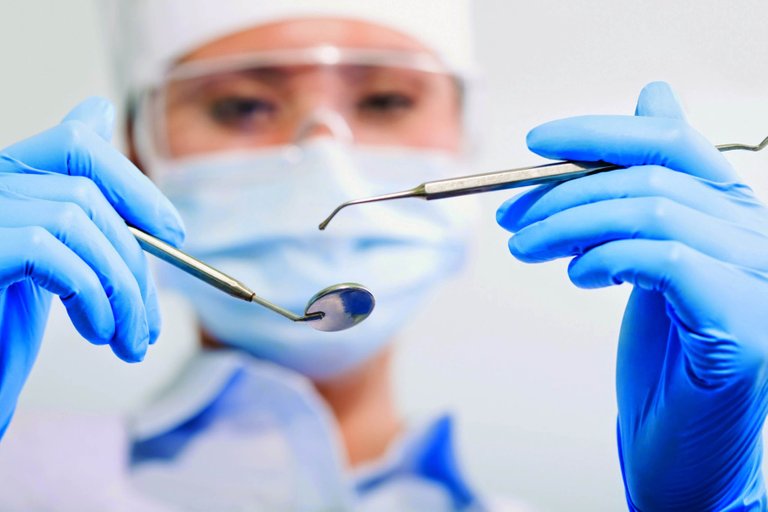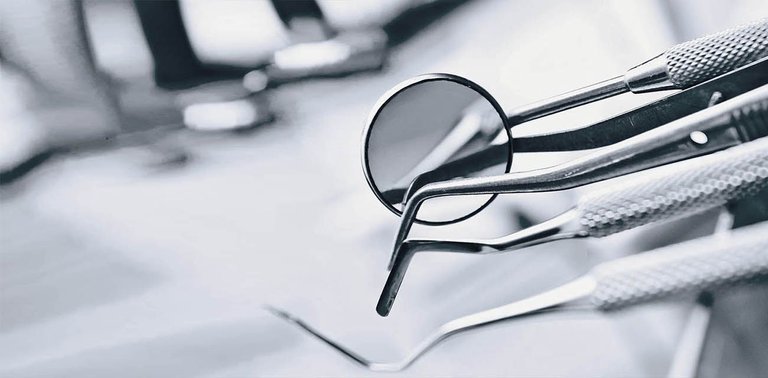
Image from Google
El mundo Odontologico es muy amplio, y la boca es un mundo que abarca muchas cosas interesantes, la Odontologia es una de las ciencias de la salud que se encarga del estudio, prevencion,diagnostico y tratamiento de las enfermedades dentales y bucales que no solo incluyen los dientes, sino tambien las encias, el tejido periodontal, el maxilar superior, la mandibula, y la articulacion temporomandibular. Hoy estaremos nombrando 12 curiosidades del mundo Odontologico que no conocias :
1-En la antigüedad los dientes sucios se frotaban con un lienzo blanco y una mezcla de ceniza y miel blanca, y en caso de que hubiera encías enfermas además había que mezclar semillas y raíces de ortiga mezcladas con yema de huevo y miel blanca.
2-El músculo más flexible y, a su vez, el más fuerte del cuerpo es la lengua.
3-La odontología existe desde hace al menos 5000 años. Hoy en día, se tienen evidencias de que los egipcios realizaban extracciones. Además, el primer odontólogo conocido fue un egipcio llamado Hesi-Re, encargado de mitigar los dolores dentales de los faraones.
4- El esmalte dental es uno de los elementos más duros y un ejemplo de su dureza y resistencia es que el único material que supera en dureza al esmalte es el diamante.
5-A finales del siglo XIX, en 1896 en Estados Unidos, el Dr. Washington Wentworth Sheffield, introduciriá la comercialización del tubo de pasta de dientes o dentífrico hoy conocido por todos.
6-El primer sillón dental fue una invención de Josiah Flagg, padre de la odontología americana en el 1839. Pero no es hasta 1958 que se introduciriá en el gabinete dental el primer sillón dental totalmente reclinable, que permitiriá al paciente mayor comodidad y al odontólogo tener la ayuda de un asistente.
7-A pesar de que no sea muy habitual hay que saber que los dientes tienen la capacidad de desarrollar tumores, conocidos con el nombre de Teratomas y que no suelen causar apenas daño ya que la amplia mayoría de estos tumores son benignos y se pueden remover de forma sencilla mediante una intervención quirúrgica.
8-El primer cepillo de dientes de la historia fue inventado por un emperador chino alrededor del año 1500. Colocó unas cerdas de puerco en un mango elaborado a base de hueso de animal. No obstante, el cepillo de dientes tal y como lo conocemos ahora no llegó hasta el siglo XVII.
9-El primer anestésico conocido en el mundo de la odontología fue la cocaína. No obstante, poco después se empezó a investigar si dicho anestésico podría crear adicción entre los pacientes. En 1905, el alemán Alfred Einhorn descubrió la procaína, la cual se hizo muy popular entre los dentistas de la época. Actualmente prácticamente no se utiliza por su corta duración y por producir muchas alergias. Hoy día se utilizan los anestésicos del llamado “grupo amida”.
10-Aunque no es nada habitual, hay bebés que nacen con todos los dientes. Esto le ocurrió al rey Luis XIV.
11-En el Japón del Siglo XVII, las mujeres seguían una curiosa tradición. Se pintaban los dientes de negro como símbolo de fidelidad a sus esposos.
12- Dentro de la boca se alojan más de 300 familias distintas de bacterias.

Image from Google
The Odontological world is very broad, and the mouth is a world that encompasses many interesting things, Dentistry is one of the health sciences that is responsible for the study, prevention, diagnosis and treatment of dental and oral diseases that not only include the teeth, but also the gums, the periodontal tissue, the upper jaw, the jaw, and the temporomandibular joint. Today we will be naming 12 curiosities of the Odontological world that you did not know:
1-In ancient times dirty teeth were rubbed with a white cloth and a mixture of ash and white honey, and in case there were diseased gums also had to mix seeds and roots of nettle mixed with egg yolk and white honey.
2-The most flexible muscle and, in turn, the strongest in the body is the tongue.
3-Dentistry has been in existence for at least 5000 years. Nowadays, there is evidence that the Egyptians made extractions. In addition, the first known dentist was an Egyptian named Hesi-Re, in charge of mitigating the dental pains of the pharaohs.
4- Dental enamel is one of the hardest elements and an example of its hardness and resistance is that the only material that exceeds hardness enamel is diamond.
5-At the end of the 19th century, in 1896 in the United States, the Dr. Washington Wentworth Sheffield, will introduce the commercialization of the tube of toothpaste or toothpaste known today by all.
6-The first dental chair was an invention of Josiah Flagg, father of American dentistry in 1839. But it is not until 1958 that the first fully reclining dental chair will be introduced into the dental cabinet, which will allow the patient greater comfort and the dentist have the help of an assistant.
7-Although it is not very common to know that the teeth have the ability to develop tumors, known as Teratomas and that usually cause little damage since the vast majority of these tumors are benign and can be removed in a simple way by means of a surgical intervention.
8-The first toothbrush in history was invented by a Chinese emperor around 1500. He placed pig bristles in a handle made from animal bone. However, the toothbrush as we know it now did not reach the seventeenth century.
9-The first anesthetic known in the world of dentistry was cocaine. However, shortly after, it was begun to investigate if said anesthetic could create addiction among the patients. In 1905, the German Alfred Einhorn discovered procaine, which became very popular among dentists of the time. Currently practically not used for its short duration and for producing many allergies. Today the anesthetics of the so-called "amide group" are used.
10-Although it is not usual, there are babies who are born with all the teeth. This happened to King Louis XIV.
11-In Japan of the seventeenth century, women followed a curious tradition. They painted their teeth black as a symbol of fidelity to their husbands.
12- Inside the mouth there are more than 300 different families of bacteria.

Image from @jesskue
Thank for the support!!
Follow me, Upvote and Resteem if you like :)
Writen by @jesskue
Que datos tan interesantes. Me sorprendió el de la dureza del esmalte.
gracias por pasarte por aca, y si hay muchas cosas que no sabiamos :)